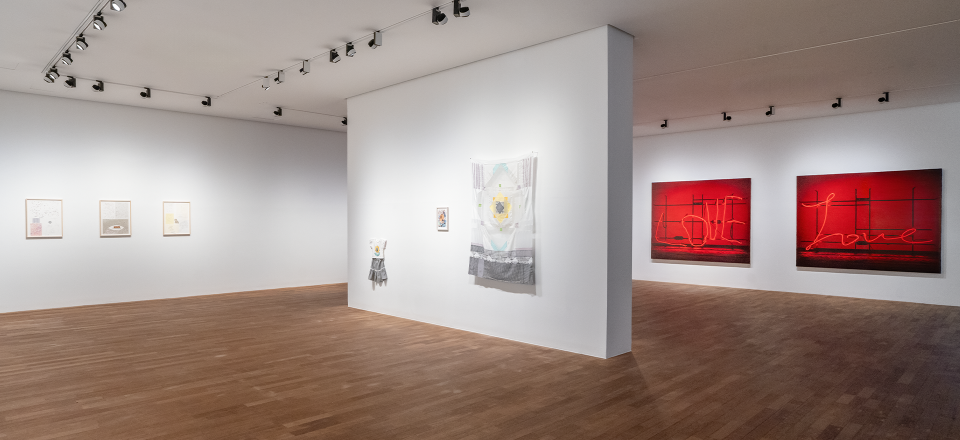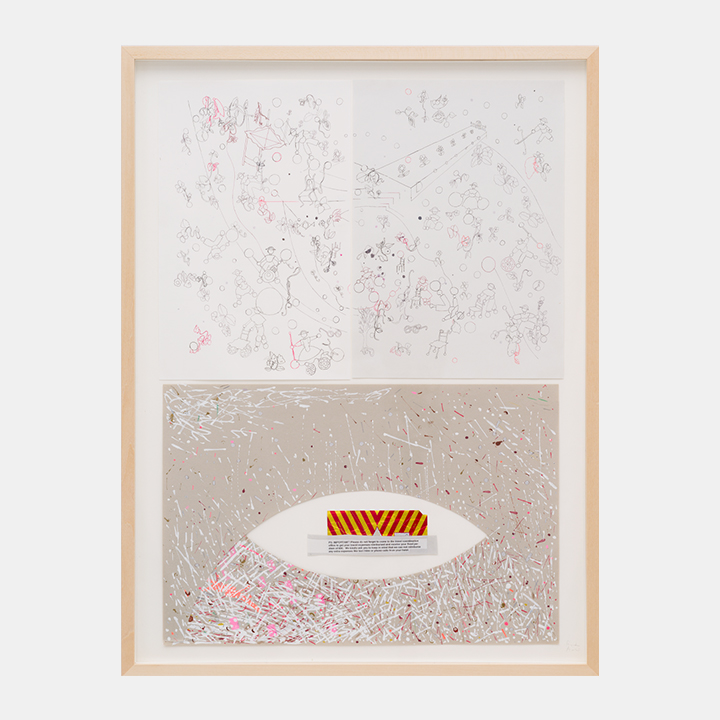ARTIST
Aoki Ryoko
아오키 료쿄
1973-
Aoki Ryoko is known for her creation of images that connect diverse entities, spanning from people, animals, plants, various objects to geometric patterns. She employs various techniques, including drawing, embroidery, patchwork, and installations that incorporate objects and clothing used by her family and herself. Through Aoki's works, images, words, and objects, which would typically hold fixed meanings and uses, break free from conventional concepts. Instead, they form individual, liberated, and fluid relationships with one another. For example, In Heavy Rotation Item, a sunflower-patterned T-shirt once worn by her daughter during childhood confronts a geometric patchwork pattern inspired by the sunflower, representing both physicality and abstracted images. In UtheS, Aoki combined words she found while reading interviews published in music magazines, occult magazines, and newsletters from the 1990s, which made her feel uncomfortable or left a lasting impression on her. These words were selected from her own interests at the time, encompassing concepts that question gender biases and norms, a sense of belonging, and the enigmas of capitalism. Aoki's works offer a sort of time travel through the cherished items that could not be discarded, and the memories contained within those items.
아오키 료코는 인물, 동물, 식물, 사물, 그리고 기하학적 모양과 같은 다양한 형태의 존재를 연결하는 작품으로 잘 알려져 있다. 그녀는 소묘, 자수, 패치워크, 그리고 작가 자신을 포함한 가족의 물건과 의류를 이용한 다양한 방식으로 설치 작업을 전개한다. 아오키의 작품을 통해 고정된 의미와 용도를 가진 사물과 단어들은 기존의 개념을 벗어나 자유롭고 유동적인 관계를 형성한다 예를 들어, 에서는 작가의 딸이 어릴 적 입었던 해바라기 무늬 티셔츠와 그 무늬에서 영감을 받은 기하학 모양의 패치워크가 각각 신체성의 증거와 추상적 이미지로 대립한다. 에서는 작가가 1990년대 음악 잡지, 오컬트 잡지, 회보 등에 실린 인터뷰를 읽으면서 거부감을 느끼거나 마음에 남았던 단어를 작가의 이전 소묘 작업과 결합시킨 것이다. 작가는 판에 박힌 젠더 관념, 속박 의식, 자본주의에 대한 의문 등 당시 자신이 가지고 있던 관심사 중에서 골라낸 단어들을 이 작품에 담아냈다. 이처럼 아오키의 작품은 소중한 나머지 차마 버리지 못한 물건, 그리고 그 물건에 담긴 추억을 통한 일종의 시간여행을 선사한다.

